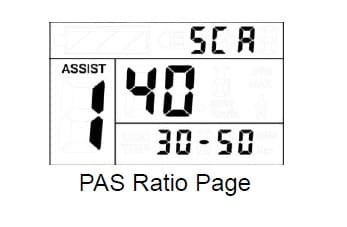If you’re an e-bike owner, you may be wondering about the accuracy of the speed reading on your bike’s display. The speed reading on an e-bike display can be a helpful tool for monitoring your riding speed, but how reliable is it? In this article, we’ll dive into the details of how e-bike speed readings work, and discuss factors that can impact their accuracy.
Understanding E-Bike Speed Readings
E-bike speed readings are typically displayed on a digital screen located on the handlebars or frame of the bike. These displays use sensors to measure the rotation of the bike’s wheel and calculate the speed based on the wheel’s circumference.
E-bike speed readings are usually measured in miles per hour (mph) or kilometers per hour (km/h). The accuracy of these readings can vary depending on several factors, including the quality of the sensors used, the condition of the bike’s tires, and external factors such as wind resistance and road conditions.
Factors Affecting E-Bike Speed Readings
Sensor Quality
The accuracy of e-bike speed readings is dependent on the quality of the sensors used to measure wheel rotation. Low-quality sensors may produce inaccurate readings or even fail altogether, leading to unreliable speed data.
Tire Condition
The condition of a bike’s tires can also impact speed readings. Tires that are underinflated or worn down may produce inconsistent readings, which can result in inaccurate speed data.
Wind Resistance
External factors such as wind resistance can also affect e-bike speed readings. Riding into a headwind can reduce your speed, while riding with a tailwind can increase it. These changes in wind resistance can impact the accuracy of speed readings.
Road Conditions
Finally, the condition of the road you’re riding on can also impact speed readings. Riding on rough or uneven terrain can cause the bike’s wheels to spin at different rates, resulting in inaccurate speed data.
Improving E-Bike Speed Reading Accuracy
While e-bike speed readings can be impacted by various factors, there are several steps you can take to improve their accuracy.
Check Sensor Quality
If you’re experiencing inconsistent or inaccurate speed readings, it may be worth checking the quality of your bike’s sensors. Upgrading to higher-quality sensors can improve the accuracy of speed data.
Maintain Tires
Maintaining proper tire pressure and replacing worn-down tires can also help improve the accuracy of speed readings. Make sure to regularly check your bike’s tire pressure and replace tires as needed.
Minimize Wind Resistance
Reducing wind resistance by riding in a more aerodynamic position or using wind-resistant gear can help minimize the impact of external factors on speed readings.
Choose Smooth Roads
Finally, riding on smooth, even roads can help improve the accuracy of speed readings by reducing the impact of uneven terrain on wheel rotation.
Conclusion
The speed reading on your e-bike display can be a useful tool for monitoring your riding speed, but its accuracy can be impacted by various factors. By understanding these factors and taking steps to improve sensor quality, maintain tires, minimize wind resistance, and choose smooth roads, you can improve the accuracy of e-bike speed readings and get the most out of your ride.
FAQs
Q1. Can I trust the speed reading on my e-bike display?
While e-bike speed readings can be impacted by various factors, including sensor quality and external factors like wind resistance and road conditions, they can generally be considered reliable as long as these factors are taken into account.
Q2. How often should I check my bike’s tire pressure?
It’s generally recommended to check your bike’s tire pressure before each ride. This will help ensure that the tires are properly inflated and can help improve the accuracy of speed readings.
Q3. Is it worth upgrading to higher-quality sensors for my e-bike?
If you’re experiencing inconsistent or inaccurate speed readings, upgrading to higher-quality sensors can be worth considering. These sensors can provide more reliable speed data and help improve your overall riding experience.
Q4. Can riding on rough terrain impact the accuracy of e-bike speed readings?
Yes, riding on rough or uneven terrain can cause the bike’s wheels to spin at different rates, which can result in inaccurate speed data. Choosing smooth roads can help improve the accuracy of speed readings.
Q5. Is wind resistance a significant factor in e-bike speed readings?
Wind resistance can be a significant factor in e-bike speed readings. Riding into a headwind can reduce your speed, while riding with a tailwind can increase it. Reducing wind resistance by riding in a more aerodynamic position or using wind-resistant gear can help minimize its impact on speed readings.


